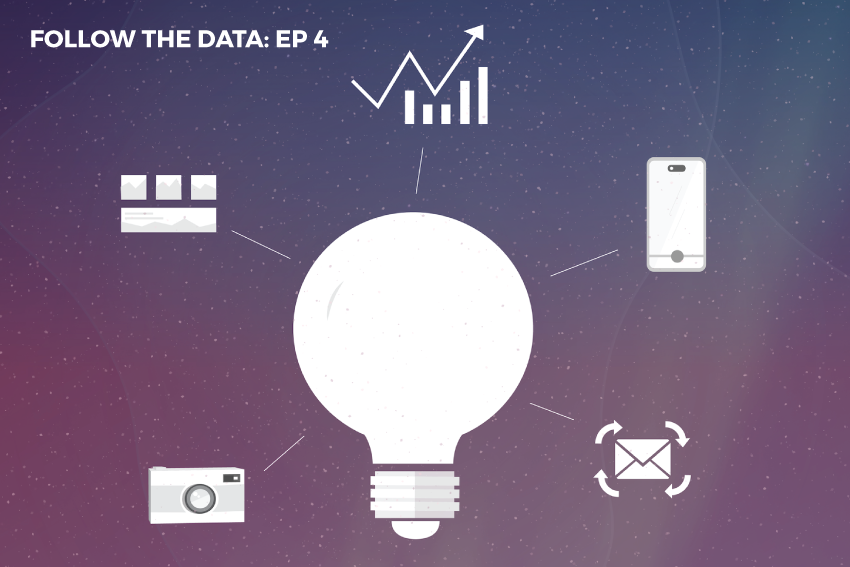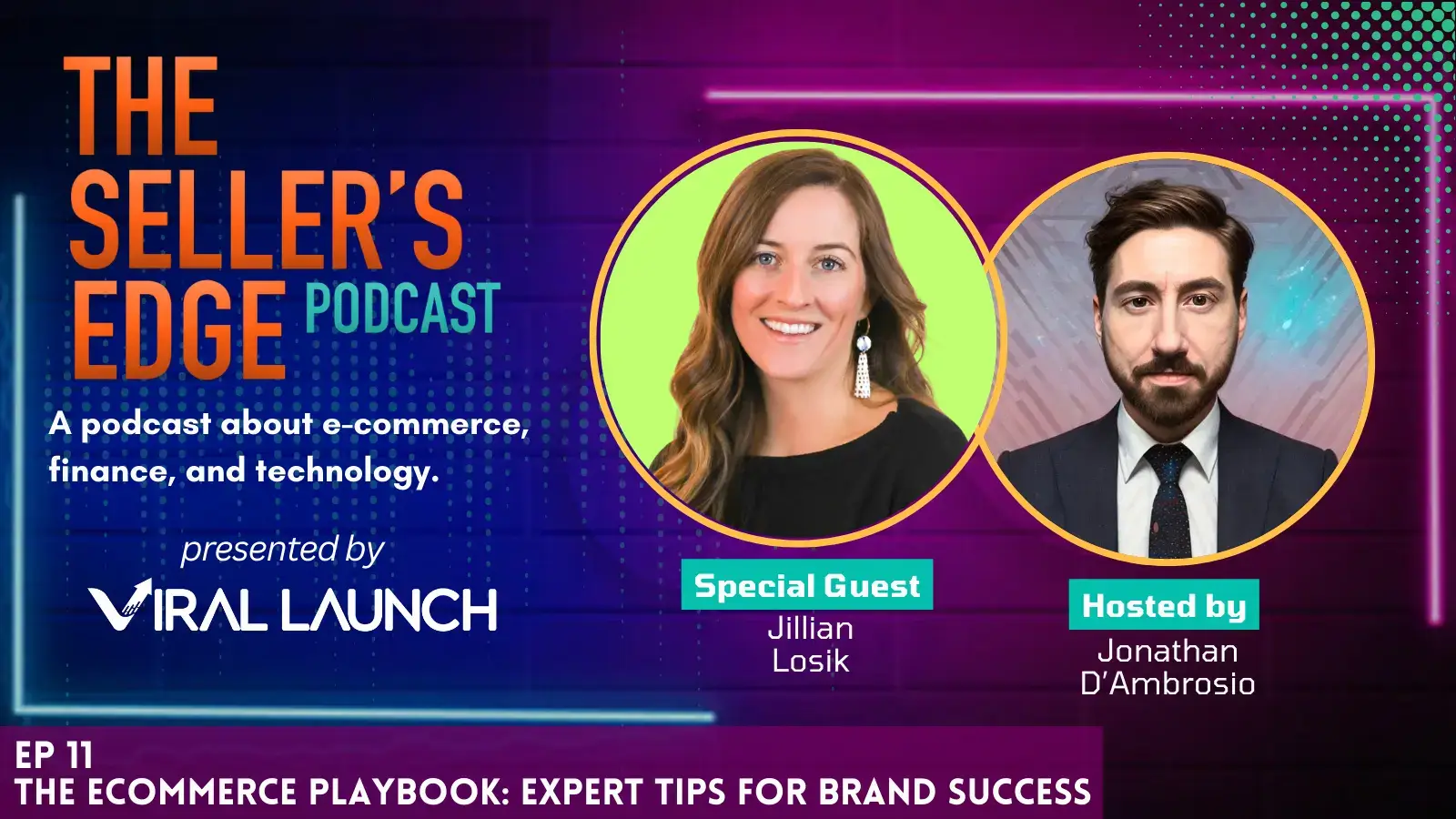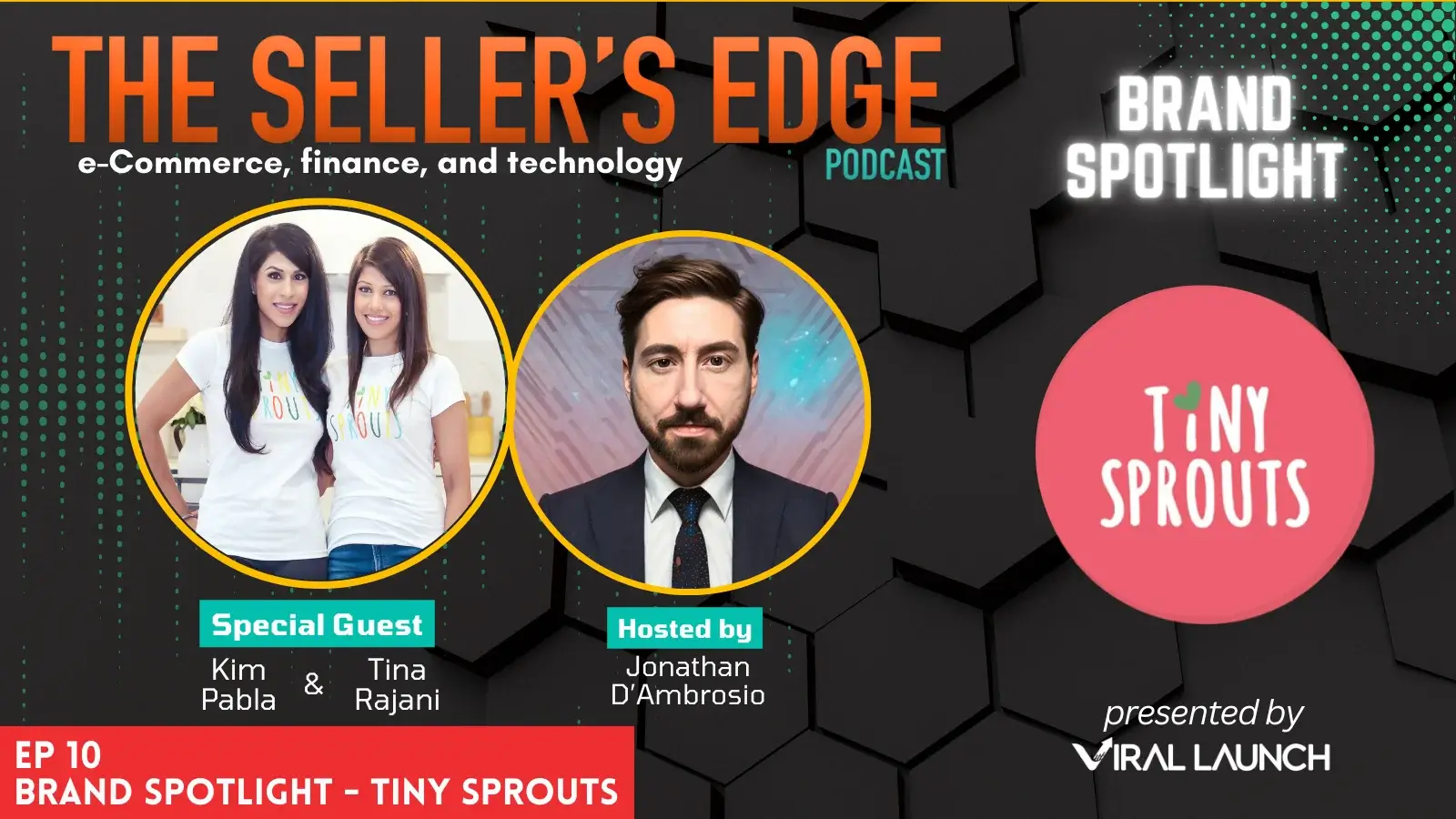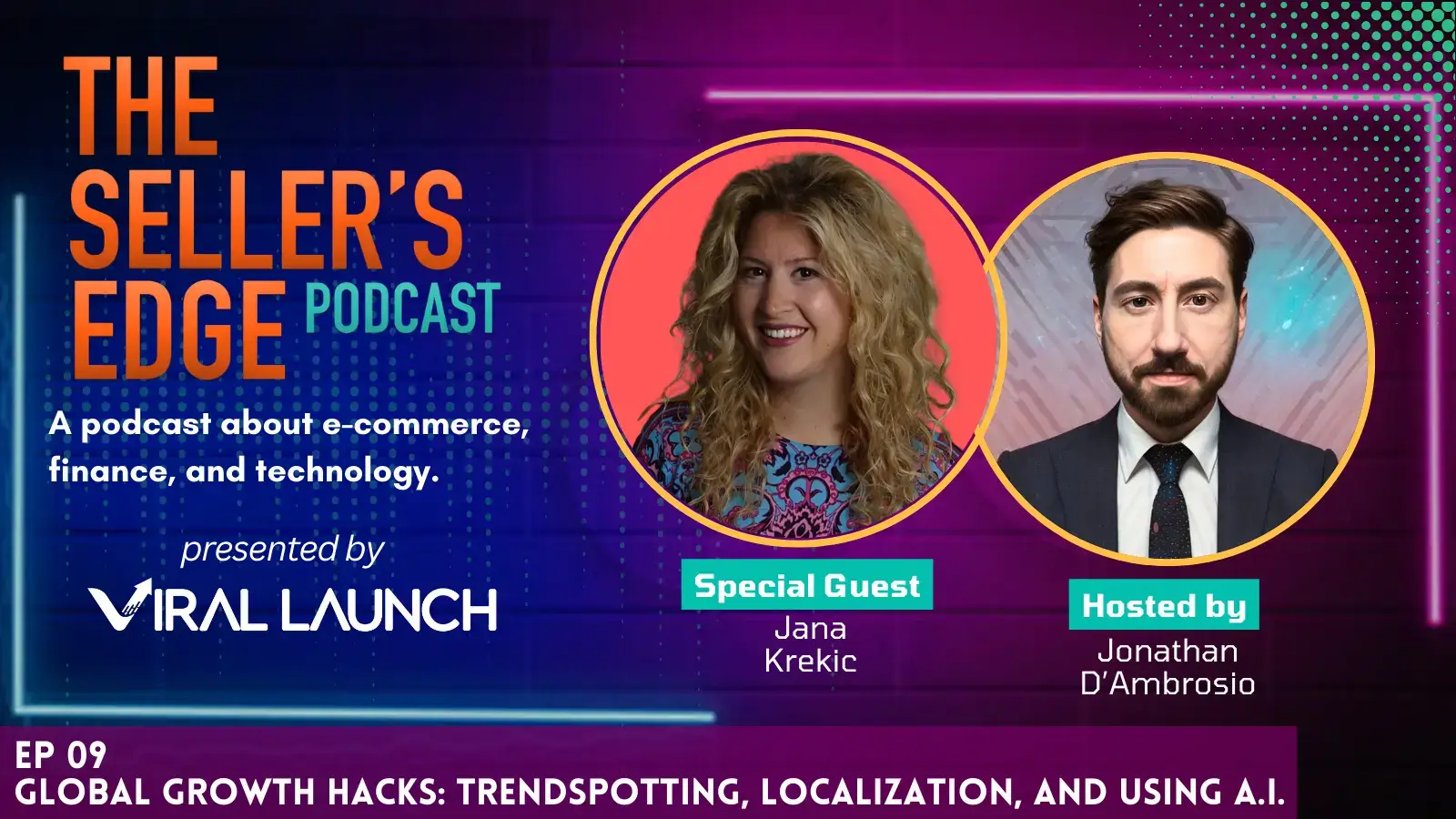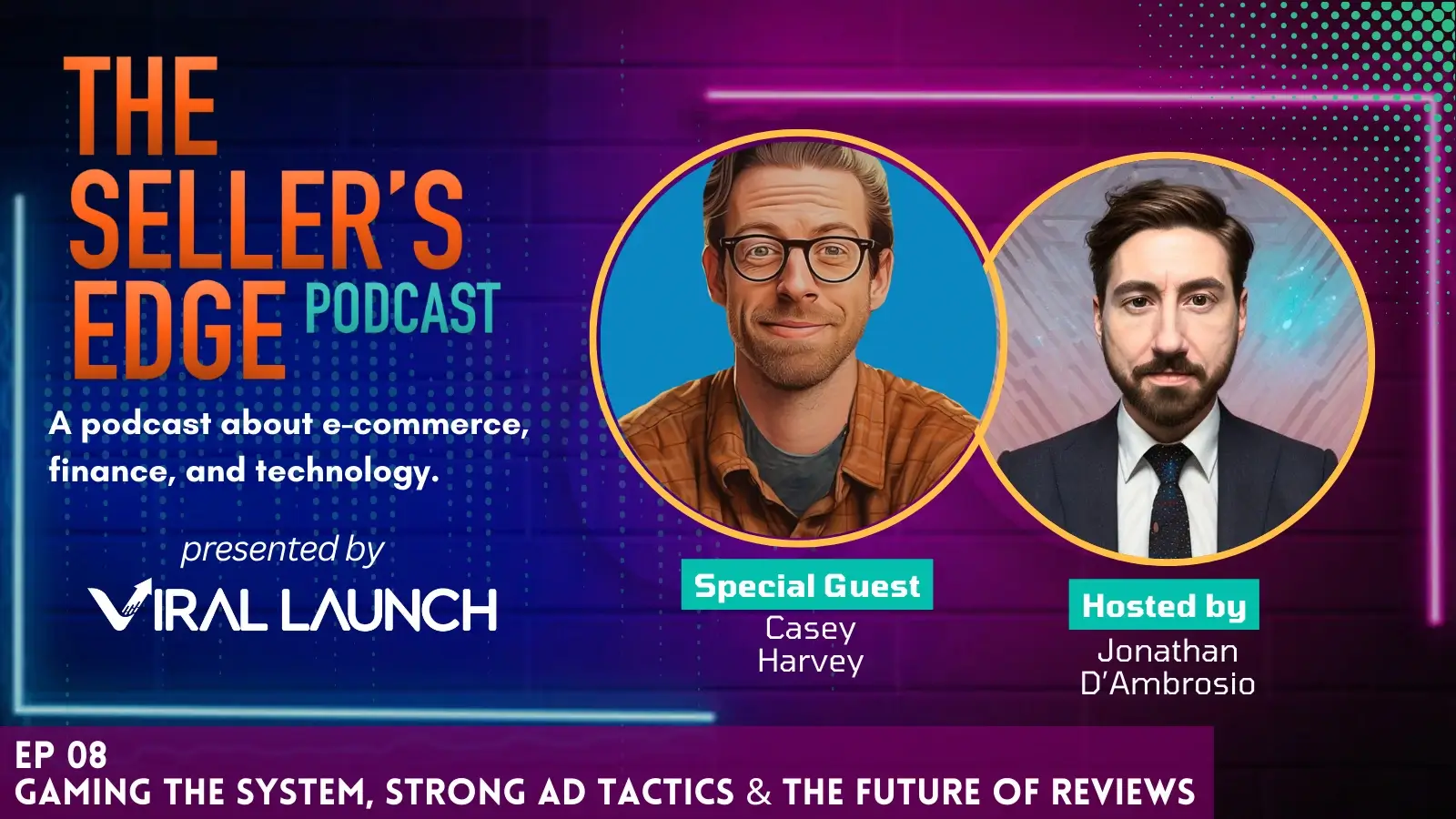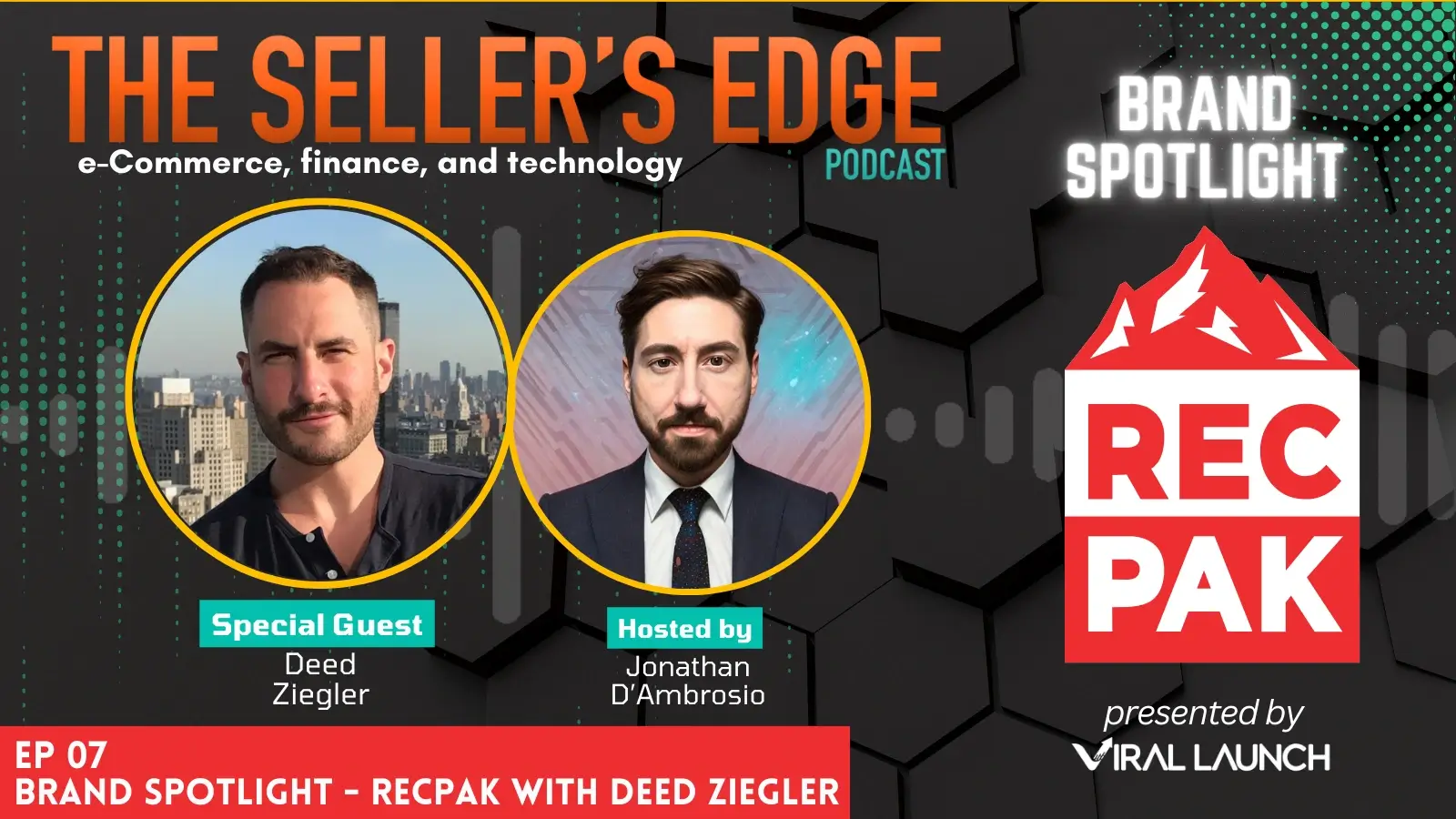Follow the Data Episode 4: Sales Velocity
Keep increasing your sales, and Amazon will reward you with a coveted spot on page 1. Sounds like a simple formula, but the facts say there are other factors in play. Join Viral Launch CEO Casey Gauss and Cameron Yoder for episode 2 of “Dispelling Myths” to find out why sales history, not sales velocity, is the key to maintaining high rank on Amazon.
Listen on iTunes . See All Episodes
Listen on Stitcher / Listen on Google Play
Follow the Data Show Notes
- We’ve been busting myths since Day 1, and the misunderstanding of BSR is one we’ve been embattled with for some time. Check it out our Complete guide to Amazon’s Best Seller’s Rank (BSR).
- If you’re just starting out as an Amazon Seller and feeling lost trying to figure out how sales velocity, sales history, ranking, and promotions all work, check out our 3 Keys to Success seller guide.
- Here at Viral Launch, we’re just crazy about sales history. Not only is it important to maintaining rank, it is also a great indicator for how a product will perform in the future. Market Intelligence shows up to two years of sales history for a product market so you can make realistic projections about future sales. Sign up for a free Viral Launch account to get a free trial of Market Intelligence.
- Want to be on the show? Reach out to our content team!
Podcast Transcript
Casey Gauss:
Do not focus on BSR. Forget it. Only pay attention to ranking. And then really focus on building a strong sales history. Don’t go in and just give away a product over 5 days just because you want to improve your velocity and you think it’s that is going to help you maintain rank and the drive organic sales from there. Really, you need to focus on building up your average per day sales history.
Casey Gauss:
No one can find your product when it’s buried at the bottom of page 10 search results. To climb in the rankings and capture more traffic you need sales.
Cameron Yoder:
But are all sales created equal? I’m Cameron Yoder.
Casey Gauss:
And I’m Casey Gauss, your host for Follow the Data: Your Journey to Amazon FBA Success. In this show we leverage the data we’ve accumulated at Viral Launch from over 20,000 product launches and our experience working with over 5500 brands on Amazon to help you understand the big picture when it comes to Amazon, and most importantly, what it takes to have success.
Cameron Yoder:
These first four inaugural episodes of Follow the Data are all part of our Dispelling Myths series in which we explore topics that have garnered a lot of conversation among the Amazon seller community but have not been proven or disproven using factual evidence.
Casey Gauss:
We’ll talk about why these Amazon theories make sense, where they’ve come from and what the data is saying about what is actually happening.
Cameron Yoder:
Casey, can you define – can you define sales velocity for us?
Casey Gauss:
Yeah, yeah. So sales velocity is the rate at which you are selling. It’s simple as that. You know, one thing is, I think it probably just sounds like a cool term so people want to throw it around.
Cameron Yoder:
Velocity.
Casey Gauss:
Which, which, you know, I don’t blame them.
Cameron Yoder:
That’s pretty cool.
Casey Gauss:
Yeah. Basically sales velocity is this myth that if your sales continue to increase, then Amazon will favor you with good keyword ranking. You know, as an example, people like to set up promotions where they’re incrementally increasing because it shows that their velocity is increasing, and they think that that is what Amazon likes to see because, you know, to them it looks more organic, and they think that Amazon wants to see things that are more organic. Also, you know, pretty much on any website or service provider’s website you’ll find the term sales velocity on there, and they are trying to tell you that it’s sales velocity Amazon cares about when it comes to keyword ranking, and it’s just not true.
Cameron Yoder:
If it’s not sales velocity, what is it?
Casey Gauss:
Yeah, it is sales history. So it sounds –
Cameron Yoder:
Interesting.
Casey Gauss:
Yeah, not as cool of a term, but it’s a lot more accurate in how Amazon looks at your sales and then decides how to rank your products based on, yeah, sales. One thing that we do kind of want to point out here is, you know, this myth we’ve been trying to kill it forever, and that is just BSR, the myth of BSR. So essentially what BSR is is BSR is like a report card. It’s basically an indicator of past sales, much like in a report card where you do some work and then your teacher grades it, and then you get a letter grade post-work, saying how well or how much work you did. And so the same is true with BSR. If I sell 100 units it will impact my BSR, but my BSR does not impact my bestseller rank, does not impact my future sales. So please never try to improve your BSR. Try to improve your sales, and then yes, of course, your BSR will improve from there, but yeah.
Cameron Yoder:
Hey guys, Cam here. I just want to break and clarify something that is–in a lot of ways–so obvious for us here at Viral Launch that we often forget to say it explicitly, and that is that BSR is not the key to visibility on Amazon. Keyword ranking is. You might have a great BSR but if you aren’t getting sales through a keyword, you aren’t going to gain keyword ranking which is how shoppers will find you in search. Got it? Not BSR, keyword ranking. Okay, now back to the show.
Casey Gauss:
You know, I think the analogy is as simple as this. So if I’m standing on the Earth’s surface, to me it appears flat, right? But when I take that 10,000-foot view, or that mile view, or however high you need to be to really start to see the curvature of the earth, you’re really able to get a different perspective. You’re able to – you get in more data and are able to really start to understand, hey, it’s not actually sales velocity. It’s actually sales history. The perspective that we have of the space running hundreds and hundreds of promotions daily, we’re able in tracking keyword ranking for many keywords that are found in the listing or the targeted keywords. We’re able to really get a great perspective of what is Amazon paying attention to when it comes to sales history or sales in general and driving keyword ranking.
Cameron Yoder:
All right, so we’ve talked a little bit about, again, defining sales velocity and defining sales history, and taking a look at what the myth is saying and what other people are saying. But let’s jump into the data. What – Casey, what have we found when it comes to sales history?
Casey Gauss:
Yeah, so both from the data that we’ve been able to aggregate, as well as indirectly from Amazon, we know that Amazon is actually tracking sales in these buckets, right? So they’re tracking what does the average per day sales look like over the last 24 hours, 48 hours, three days, five days, and then in these seven-day increments, out until, you know I don’t know how long, but I know it’s at least 180 days. Basically what that shows us is yes, Amazon cares about most recent sales, or they more heavily weight recent sales, which is where people are coming with the sales velocity, right? So if your velocity is good then your most recent sales history is good. So maybe the last day, maybe the last five days, who knows? What the sales velocity kind of algorithm doesn’t take into account is history, which Amazon is definitely heavily weighting.
Cameron Yoder:
Right.
Casey Gauss:
So I can give a couple of examples of some promotions that we’ve run, which then give us insight into the sales history.
Cameron Yoder:
Go for it.
Casey Gauss:
Yeah, so, so many people have run these promotions – and it’s pretty common knowledge, I’d like to think – right now where you can’t just run a one-day promotion. Back in, you know, 2014 you could do that. Running a one-day promotion, a big spike in sales would help to improve your keyword ranking, but Amazon is more – more so heavily weighting sales history where if I run a one-day promotion, yes, my velocity is good. My BSR is going to increase quite significantly. But when Amazon goes to calculate your seven-day sales history or your 30-day sales history, it just doesn’t match up to those guys that are ranking page 1 and have been for the last six months. Their sales history is very solid for that particular market. So what we’ll see is maybe you’ll get a decent blip, but usually with a one-day promotion you won’t even get that nice blip anymore because there is no sales history to back it up. What we do see if you run a 3 to 5 day promotion is generally you will get ranking because you have your most recent sales history is good. But then it’s very short-lived because you don’t have enough sales history. You don’t have, you know, 90-day sales history to help rank among those guys that are selling, or have been selling, again, for six months. So we see those guys fall right back down.
And what happens if you run a 7-day promotion and don’t see any sales right off the bat? We see ranking sustained a bit further simply because yes, the sales velocity may end up being very bad after we’d run a 7-day promotion giving away 50 units per day, and then there is another three days after that where there are no sales at all. Let’s just say, you know, they have terrible images, they have terrible reviews, they just don’t convert at all. What we’ll see is that product will maintain rank for at least a little bit depending on the market, sometimes longer, sometimes indefinitely. It really depends. But for the majority of the time – and this is where having so much data, so much perspective really helps to reinforce these correlations or these trends, but this person will generally maintain rank for at least a week, or sometimes a lot longer, because they’ve built up that sales history. So the more sales history they establish, the longer that rank will maintain even though their velocity is really bad because they’re not selling anymore. Their rank will maintain because their sales history is actually pretty decent.
A case study kind of on the other side is in terms of maximizing ranking, is we had a seller in a very, very competition-heavy beauty niche, right? And so they’re giving away 100 units a day at a promotion, promotional price. They’re also selling organically. But after – it took them 30 days to get to position number three, or sorry, position number four. This is a pretty brand-new product, and they’re maintaining this position, but they’re not increasing just by giving away 100 units a day. Their BSR was better, so you know, assumedly their velocity was much better than the guys ranking ahead of them. And so anyways, what they had to do was they had to start giving away 125 units a day, and they did that for another 15 days, which put them to position two. But even still this guy in position one had probably been ranking for at least the last, you know, six months or so. And so over the last six months, you know, he’s built up a really, really solid sales history. And so it’s very difficult for this newer product that when Amazon is going and calculating the 90-day sales history, maybe 180-day sales history, you know they just don’t have any sales because it’s a brand-new product. And so they’re not able to compete. And so it took this guy 60 days of giving away – 30 days at 100 units a day, another 30 days at 125 units a day on top of now at this point they’re selling really well organically. It took them that long in order to be able to outrank this guy in first position because the guy in first position had such a strong sales history.
Rebecca Longenecker:
Are you looking to launch a product but feeling overwhelmed and frustrated by how complicated the process seems? Giving away inventory can be nerve-racking. That’s why Viral Launch offers free coaching. Talk to one of our trained Amazon seller coaches and create a custom launch strategy. Don’t have time to talk with a coach? Check out our How to Launch course on the Viral Launch YouTube channel. You can have a coach walk you through the whole process at your convenience and with the option to play back all the information.
Cameron Yoder:
To summarize – and correct me if I’m wrong, Casey – but to summarize, if you have a longer history of sales with and for your product it will carry more ranking weight than sales for a product with a shorter history, right? So longer history carries more ranking weight than shorter history when it comes to sales?
Casey Gauss:
Agreed. At the same time, though, that’s not to say that, you know, if I’m giving away 100 units I would definitely put those 100, depending on the market, I would put those 100 units over 10 days or five days, depending on how competitive the market is. But you know, if you’re giving away 10 units I would probably rather give away those 10 units over three days than 10 days because it’s not really going to – when Amazon is calculating your average per day sales, you know, one unit a day is not really going to be enough to move the lever.
Cameron Yoder:
Right. You have to have – well you don’t have to, but it is more effective and efficient to have the combination of the right strategy for sales velocity combined with the presence of a sales history.
Casey Gauss:
Yeah, correct. And you know, another example, or another almost anecdote is basically – so it’s definitely more difficult for us to rank products that have been on page 10, or you know, not selling very well for, you know, a couple years. So products that were launched maybe in 2014, off to some initial success and now not doing so well, those products are definitely more difficult for us to rank. And the reason being is they’ve actually built up a really poor sales history. And so when Amazon is going and calculating the 180-day average, maybe they’re looking out to a year, maybe further. It is definitely, you know, when Amazon goes and calculates, oh, you know, you’ve sold 1000 units over the last year, the average per day sales history is very, very poor.
Even if your velocity is killer right now, Amazon is definitely looking at your sales history. So maybe you’ve sold 1000 units in the last, you know, 10 days, right? 100 units a day. That’s really awesome. Of course, depending on your market. But that’s really great. But even still, Amazon is still looking at oh, how have you done over the last 30 days, 60 days, 90 days, year? And so it just doesn’t compute, and what we see is those guys end up losing their keyword ranking much more quickly, simply because, you know, they don’t have the sales history to compete against those on page 1.
Cameron Yoder:
Right. So launching – we talked a little bit about launching and what it takes to get to the top of page 1 for a pretty volatile or competitive market, right? How even if you have a history of a lot of sales or a history of not too many sales, it takes a decent amount of units to get to page 1. But talk about – talk about less volatile or less competitive markets when it comes to sales history.
Casey Gauss:
Yeah, so sales history is all relative to the market that you’re looking to enter, right? So if you’re entering a really niche market where these guys are selling page 1, you know, top of page 1 on average. They’re selling 300 units a month, let’s say, so that’s 10 units a day. So you only need to build a sales history of 10 units a day. So you don’t need to be nearly as aggressive as the guys that are selling 30,000 units a month. It requires the same strategy, right? Like the same metrics are involved. The same math is involved on Amazon’s algorithm. So you just have to put the right numbers in. It may be a giveaway of seven units a day for 10 days at a promotional price to maintain that rank or to build a good enough sales history to maintain that rank. Of course you need to sell well organically post-launch in order to continue –
Cameron Yoder:
Right, to maintain.
Casey Gauss:
– to build sales history so that you can continue to maintain that rank.
Cameron Yoder:
Like you said, it’s relative to the market at hand.
Casey Gauss:
Completely.
Cameron Yoder:
Completely. So the big takeaway, what is our – what is our audience’s takeaway, Casey?
Casey Gauss:
Two things. One, do not focus on BSR. Forget it. Only pay attention to ranking. And then two, really focus on building a strong sales history. Don’t go in and just give away product over five days just because you want to improve your velocity and you think it’s that velocity that is going to help you maintain rank and then drive organic sales from there. Really you need to focus on building up your average per day sales history. And so if you have older products, you know, there’s some great ways of relaunching those products within Amazon’s terms of service. Please don’t violate Amazon’s terms of service. We’re never advocates for that.
Cameron Yoder:
Right, right.
Casey Gauss:
But maybe you should find a way to couple it with some additional product that you throw into the packaging or something so that you can relaunch that ASIN, if you’re trying to revive an old ASIN, just because it has, you know, such a bad sales history. The tough part is, you know, if you have a great review quantity relative to the market then you have to figure that out. But anyways, please focus on building that sales history, not sales velocity.
Cameron Yoder:
I am an advocate for the mentality, in this case especially, that it is a marathon, and it’s not a sprint. Gain that sales history.
Well hey, that’s all for this week. Thank you so much for joining us on Follow the Data. For more reliable information about what’s really happening on Amazon, subscribe to our podcast and check out the Viral Launch blog at Viral-Launch.com.
Casey Gauss:
And don’t forget to leave us a review on iTunes. Please, please.
Cameron Yoder:
Please.
Casey Gauss:
If you like the podcast, of course. If you didn’t, please let us know how we can improve it.
Casey Gauss:
We like honest feedback, so please send us your honest feedback. If you want to be featured on the show leave us a voicemail and tell us your thoughts on today’s episode and/or any questions you have about Amazon Viral Launch or, you know, life in general. We’ll take them all.
Cameron Yoder:
We’d love to hear your life advice, please.
Casey Gauss:
Our number is 317-721-6590. Join us next week as we dispel the myth of diversification.
Cameron Yoder:
Ooh.
Casey Gauss:
Until then, remember the data is out there.
About the Amazon FBA Seller Podcast:
Viral Launch CEO, Casey Gauss, and Amazon Seller Coach Cameron Yoder bring data-driven insights to the Seller community in their weekly discussions.
On the show you’ll get the latest Amazon selling strategies and best practices based on the company’s experience launching over 22,000 products and working with over 5,500 brands. Casey and Cam will bring you up to speed on the latest Amazon news, share stories of success and failure, explore the difficulties of entrepreneurship, and discuss the way Amazon is changing retail.
At the center of the show is the Viral Launch commitment to offering reliable information to today’s entrepreneurs.
